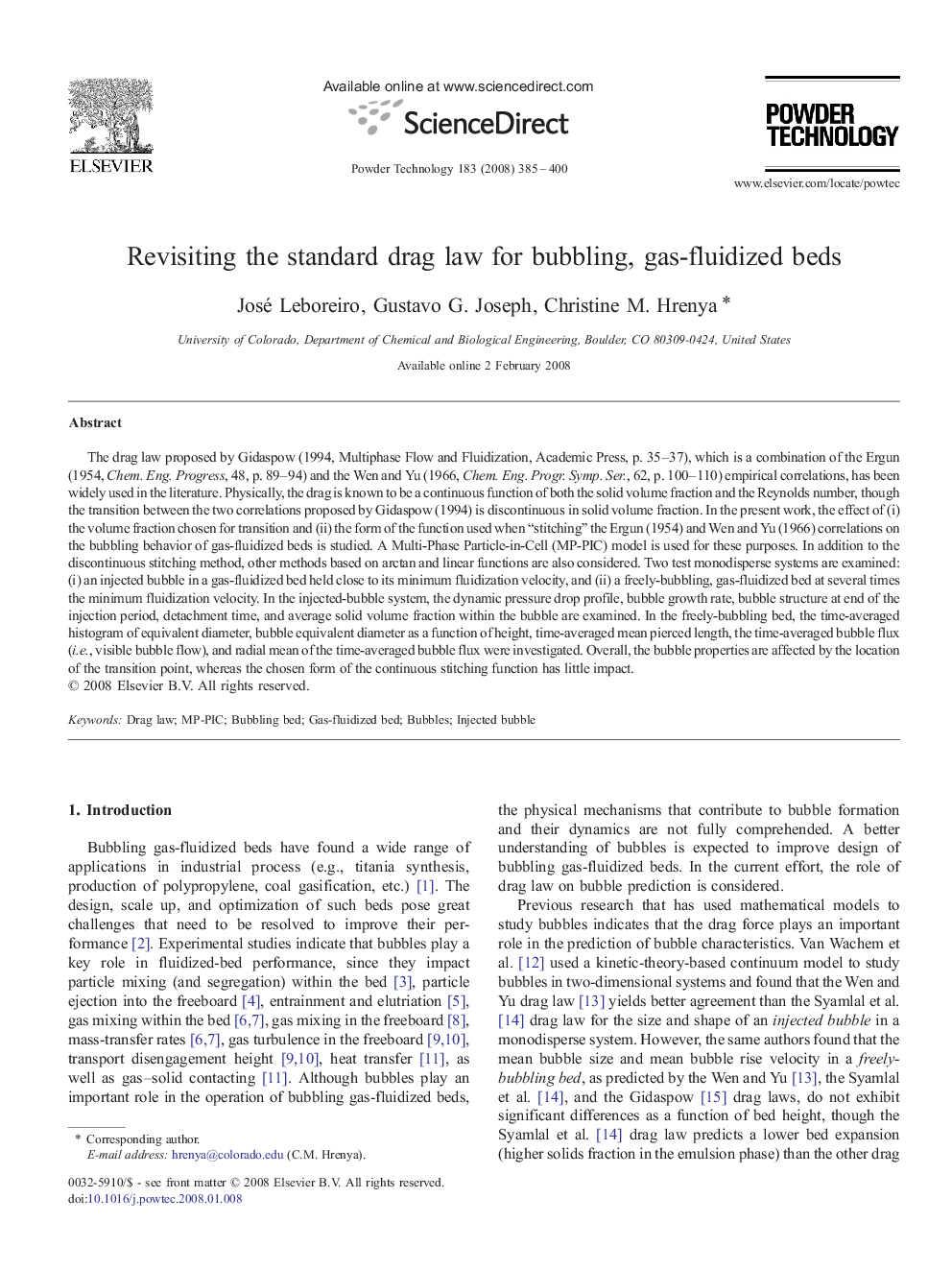| کد مقاله | کد نشریه | سال انتشار | مقاله انگلیسی | نسخه تمام متن |
|---|---|---|---|---|
| 239042 | 465791 | 2008 | 16 صفحه PDF | دانلود رایگان |

The drag law proposed by Gidaspow (1994, Multiphase Flow and Fluidization, Academic Press, p. 35–37), which is a combination of the Ergun (1954, Chem. Eng. Progress, 48, p. 89–94) and the Wen and Yu (1966, Chem. Eng. Progr. Symp. Ser., 62, p. 100–110) empirical correlations, has been widely used in the literature. Physically, the drag is known to be a continuous function of both the solid volume fraction and the Reynolds number, though the transition between the two correlations proposed by Gidaspow (1994) is discontinuous in solid volume fraction. In the present work, the effect of (i) the volume fraction chosen for transition and (ii) the form of the function used when “stitching” the Ergun (1954) and Wen and Yu (1966) correlations on the bubbling behavior of gas-fluidized beds is studied. A Multi-Phase Particle-in-Cell (MP-PIC) model is used for these purposes. In addition to the discontinuous stitching method, other methods based on arctan and linear functions are also considered. Two test monodisperse systems are examined: (i) an injected bubble in a gas-fluidized bed held close to its minimum fluidization velocity, and (ii) a freely-bubbling, gas-fluidized bed at several times the minimum fluidization velocity. In the injected-bubble system, the dynamic pressure drop profile, bubble growth rate, bubble structure at end of the injection period, detachment time, and average solid volume fraction within the bubble are examined. In the freely-bubbling bed, the time-averaged histogram of equivalent diameter, bubble equivalent diameter as a function of height, time-averaged mean pierced length, the time-averaged bubble flux (i.e., visible bubble flow), and radial mean of the time-averaged bubble flux were investigated. Overall, the bubble properties are affected by the location of the transition point, whereas the chosen form of the continuous stitching function has little impact.
The effect of the “stitching” method in the Gidaspow (1994, Multiphase Flow and Fluidization, Academic Press, p. 35–37) drag law to combine the Ergun (1954, Chem. Eng. Progress, 48, p. 89–94) and Wen and Yu (1966, Chem. Eng. Progr. Symp. Ser., 62, p. 100–110) correlations on bubbling behavior of gas-fluidized beds is studied via Multi-Phase Particle-in-Cell (MP-PIC) simulations. Overall, the bubble properties are affected by the location of the transition point, with the form of the continuous stitching function having little impact.Figure optionsDownload as PowerPoint slide
Journal: Powder Technology - Volume 183, Issue 3, 21 April 2008, Pages 385–400